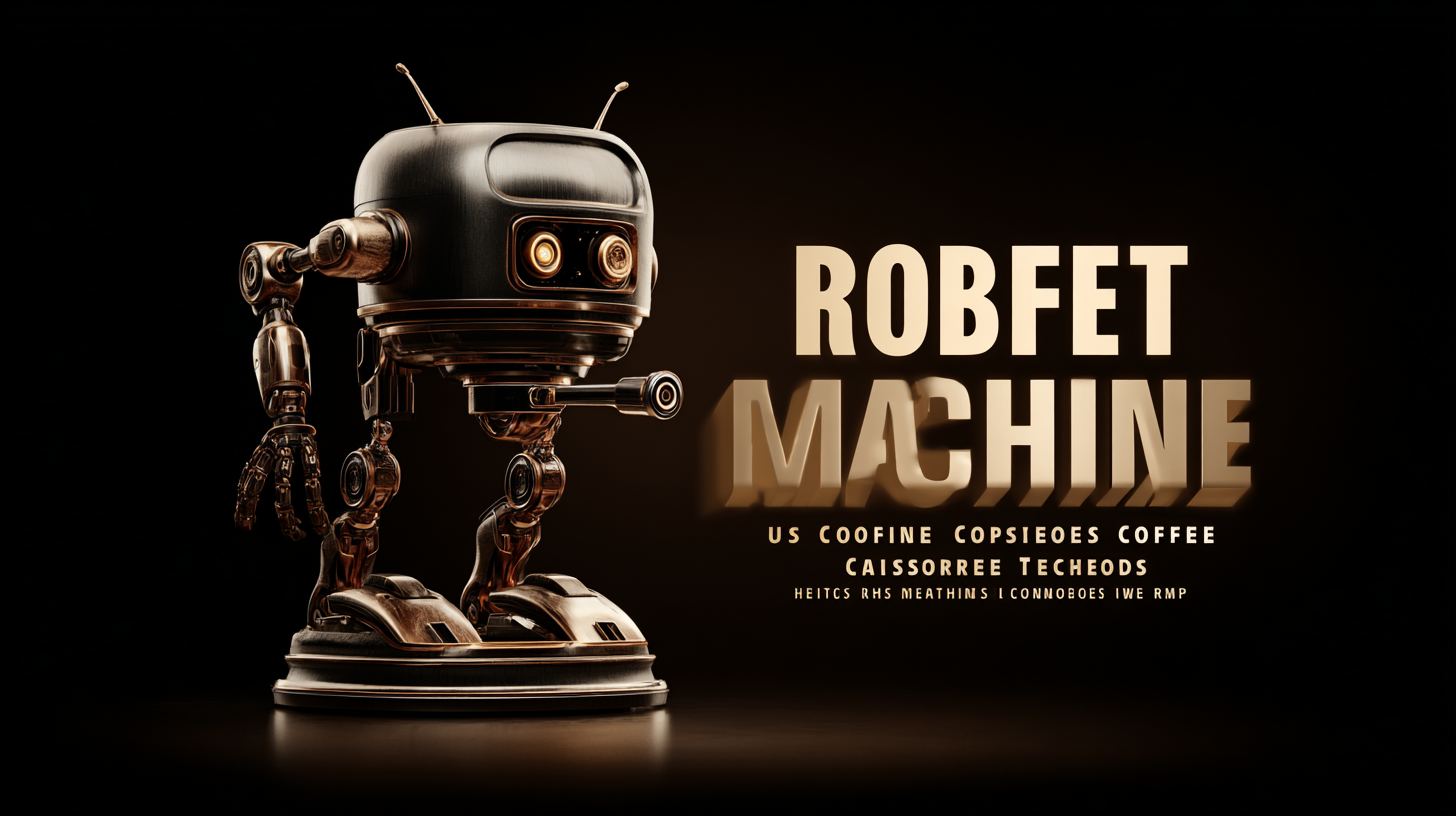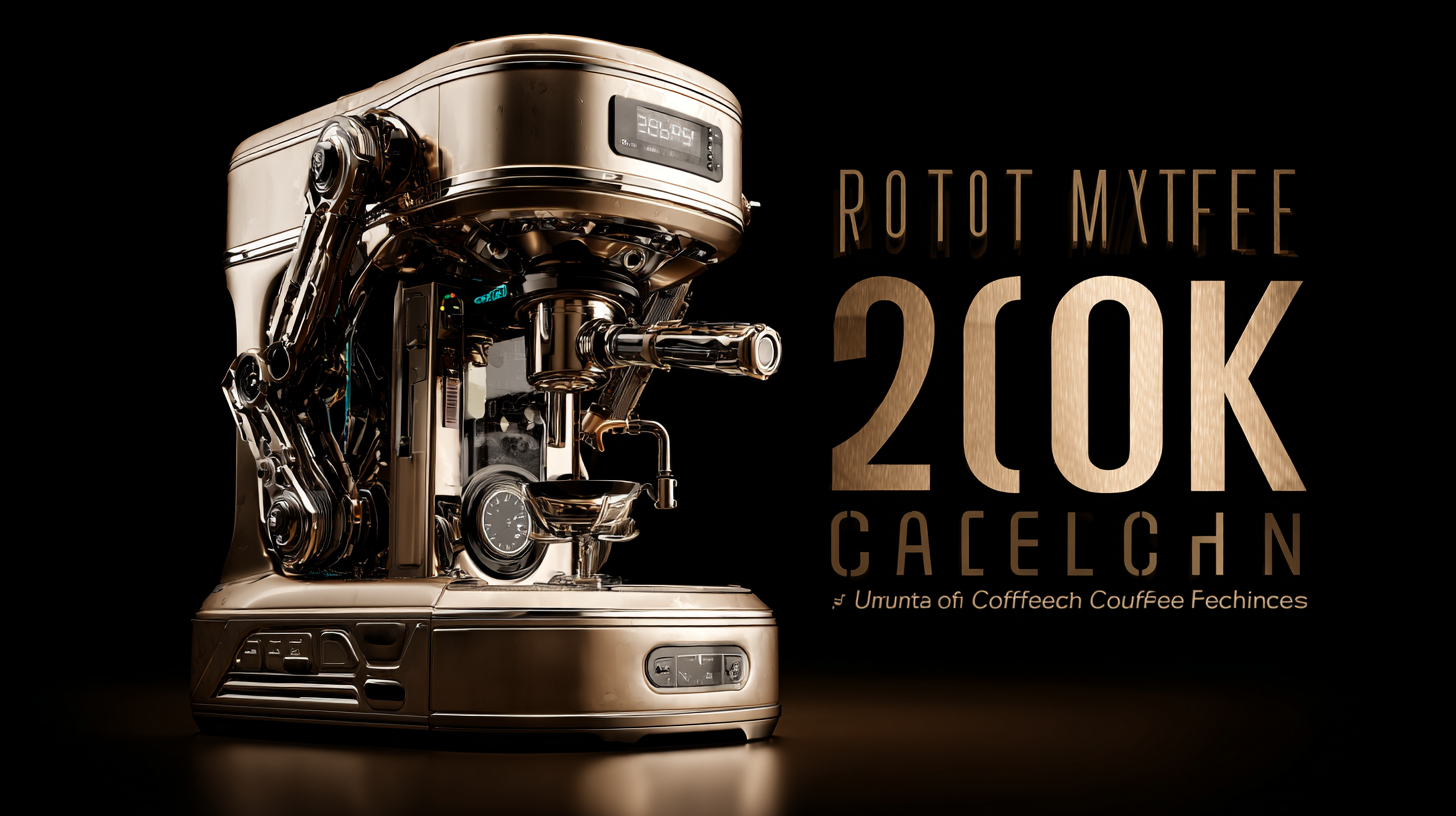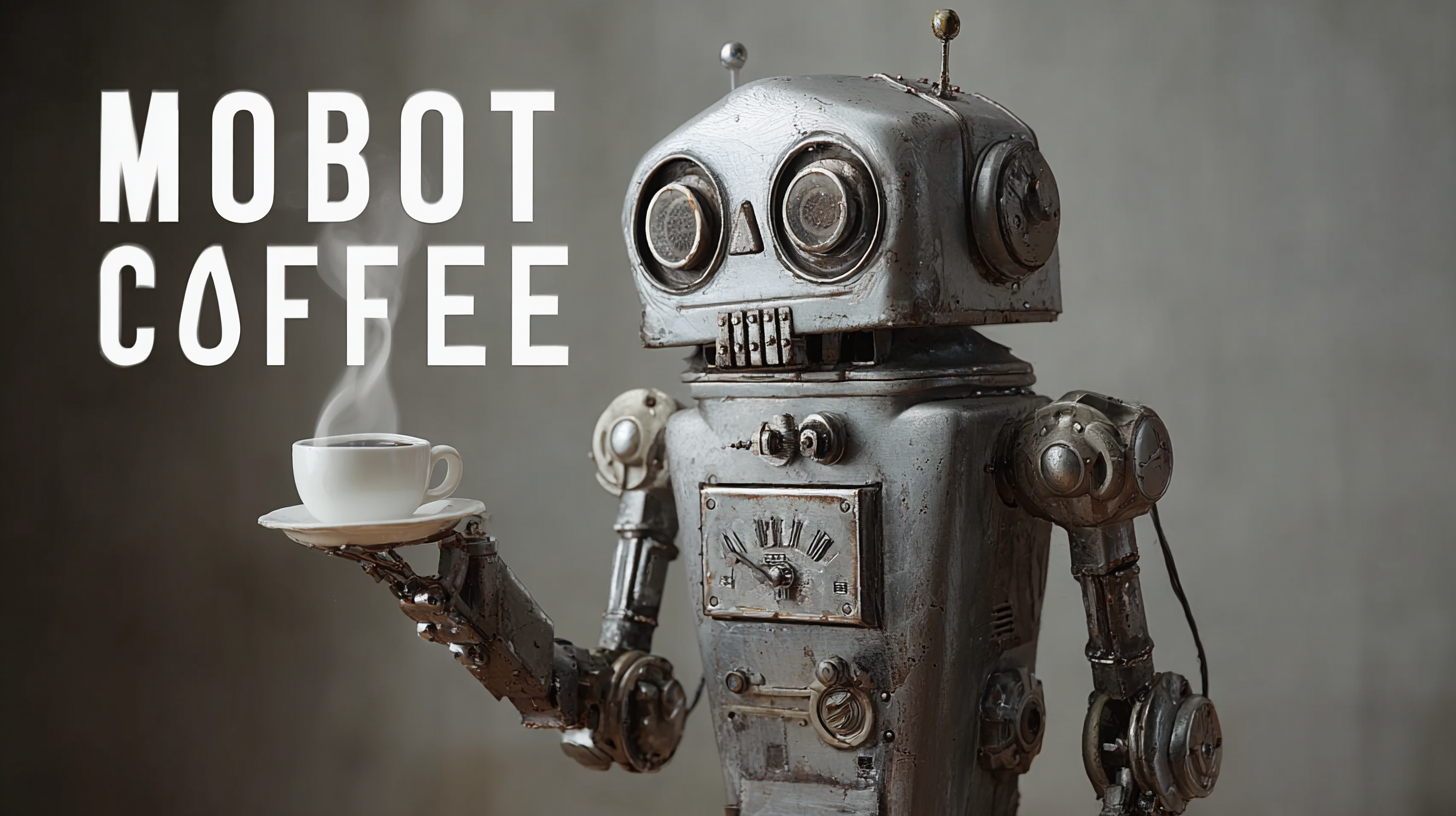Ultimate Guide to Best Robot Coffee Machine Specifications and Brewing Techniques
In recent years, the coffee industry has witnessed a remarkable transformation driven by the emergence of advanced technology, notably the Robot Coffee Machine. According to a report by Market Research Future, the global coffee machine market is projected to grow at a CAGR of 6.5%, reaching a valuation of over $15 billion by 2025. This surge is largely attributed to the rising consumer demand for convenience and quality, which robotic technology is helping to address. As China continues to enhance its manufacturing capabilities, the nation is gaining international respect for producing high-quality coffee machines that cater to this evolving market. This blog aims to provide comprehensive insights into the best Robot Coffee Machine specifications and brewing techniques, ensuring that both coffee enthusiasts and newcomers can appreciate the intricacies involved in crafting the perfect cup.

Top Features to Consider When Choosing a Robot Coffee Machine
When selecting the perfect robot coffee machine, there are several key features to consider that can significantly enhance your brewing experience. One of the most important specifications is the type of brewing method. Machines that offer various options, such as espresso, drip, and pour-over, provide flexibility to experiment with different flavors. Look for a machine that allows you to customize brew strength and temperature, as these factors heavily influence the final taste of your coffee.
Another vital feature is the ease of use and maintenance. Opt for machines that come with user-friendly interfaces, allowing you to adjust settings effortlessly. Additionally, consider models with self-cleaning capabilities and removable parts, as these will save you time and effort in upkeep.
**Tip:** Always read customer reviews to get insights into the durability and performance of specific models before making a purchase.
Furthermore, connectivity options can enhance your brewing experience. Smart coffee machines that connect to your smartphone allow you to schedule brews and customize settings remotely. This convenience can be a game-changer for busy individuals.
**Tip:** Check for compatibility with virtual assistants to enable voice commands, adding an extra layer of convenience to your coffee-making routine.

Essential Brewing Techniques for Perfect Coffee Every Time
Brewing the perfect cup of coffee isn't just about the beans; it's a science that involves precise techniques and the right equipment. According to the Specialty Coffee Association, water quality accounts for nearly 98% of a cup's content, making it essential to start with filtered or bottled water for optimal flavor extraction. The ideal water temperature for brewing ranges from 195°F to 205°F—too hot, and you'll extract unwanted bitterness; too cool, and you'll miss out on the brew's nuanced flavors.
In addition to water quality and temperature, the grind size plays a crucial role in the brewing process. A report from the Barista Guild highlights that different brewing methods require specific grind sizes for maximum extraction. For instance, a coarse grind is perfect for French press brewing, while a fine grind is essential for espresso. By understanding these essential brewing techniques and adjusting your method accordingly, you can achieve a consistent, delightful coffee experience every time.
Comparative Analysis of Popular Robot Coffee Machine Models
In the evolving landscape of coffee brewing technology, robot coffee machines have taken center stage, presenting an enjoyable blend of convenience and precision. A recent market analysis conducted by Statista reveals that the global coffee machine industry is projected to reach a staggering $16.8 billion by 2025, with robot coffee machines capturing a notable share of this market. These advanced machines not only automate the brewing process but also utilize algorithms that optimize extraction times and temperatures, resulting in a consistently superior cup of coffee.
When comparing popular models, such as the March Espresso and the Barista Bot, several key specifications emerge. The March Espresso boasts a brewing temperature range of 90-95°C and features an impressive 15-bar pressure pump, allowing for rich crema and robust flavors. On the other hand, the Barista Bot, equipped with smart connectivity, offers a customizable brewing experience, allowing users to program their preferences. According to a report by the International Coffee Organization, machines with smart capabilities are expected to see a 30% increase in sales, emphasizing the growing demand for personalized coffee experiences that these robots provide. As enthusiasts and casual drinkers alike seek out perfection in their coffee, understanding these specifications can significantly influence their choices in this burgeoning market.
Ultimate Guide to Best Robot Coffee Machine Specifications and Brewing Techniques
| Model | Brewing Capacity (Cups) | Water Reservoir (L) | Grinder Type | Brew Time (Minutes) | Price (USD) |
|---|---|---|---|---|---|
| Model A | 10 | 1.5 | Conical Burr | 5 | 199 |
| Model B | 8 | 1.2 | Flat Burr | 6 | 249 |
| Model C | 12 | 2.0 | Blade Grinder | 4 | 159 |
| Model D | 6 | 0.8 | Ceramic Burr | 3 | 129 |
Maintenance Tips for Longevity of Your Robot Coffee Machine
 Maintaining your robot coffee machine is essential for ensuring its longevity and optimal performance.
Regular cleaning is the cornerstone of maintenance.
After each use, ensure that you clean the brewing unit, drip tray, and water reservoir.
Use warm water and mild detergent to remove any coffee residues.
For more thorough cleaning, consult the machine’s manual for specific instructions on descaling and deep cleaning cycles.
Maintaining your robot coffee machine is essential for ensuring its longevity and optimal performance.
Regular cleaning is the cornerstone of maintenance.
After each use, ensure that you clean the brewing unit, drip tray, and water reservoir.
Use warm water and mild detergent to remove any coffee residues.
For more thorough cleaning, consult the machine’s manual for specific instructions on descaling and deep cleaning cycles.
Another important aspect of maintenance is checking and replacing filters as needed. If your machine uses water filters, be sure to change them regularly to prevent mineral buildup that can affect the flavor of your coffee.
Additionally, keep an eye on the coffee grounds container to empty it frequently—this prevents clogs and ensures the machine operates smoothly.
Lastly, keep your coffee machine in a dry, cool place away from direct sunlight.
Overexposure to heat and moisture can damage its electronic components and affect the brewing quality.
By following these simple tips, you can extend the life of your robot coffee machine and enjoy delicious coffee for years to come.
Innovative Brewing Methods: From Espresso to Cold Brew with Robots
In recent years, the integration of robotics into coffee brewing has revolutionized the way we enjoy our favorite beverages. Innovative methods such as automated espresso extraction, pour-over brewing, and even cold brew preparation are now at our fingertips, thanks to advanced robotic coffee machines. According to a report by the International Coffee Organization, over 15 billion cups of coffee are consumed globally each day, highlighting the burgeoning demand for quality and convenience in coffee preparation. Robotic machines not only ensure precision but also enable customization that caters to individual preferences, making each cup unique.
For espresso lovers, robotic machines utilize sophisticated algorithms that replicate barista techniques, delivering consistent results. Studies reveal that automation can reduce brewing time by up to 30%, giving users the speed and quality they crave. In the realm of cold brew, robots are optimizing steeping times and temperatures to produce smoother, fuller-bodied coffees, with a market growth expected to reach $500 million by 2025, according to Grand View Research. These innovations signal a shift toward more efficient, enjoyable coffee-making experiences, setting a new standard in the coffee industry.
